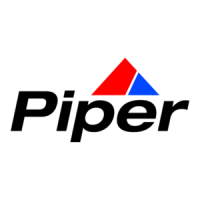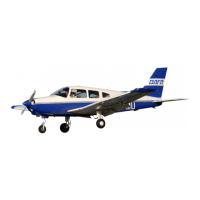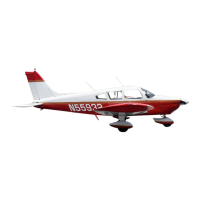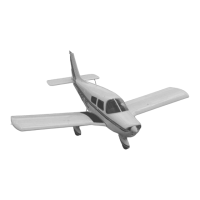PIPER AIRCRAFT, INC.
PA-28-161, WARRIOR III
MAINTENANCE MANUAL
PAGE 1
Nov 30/062D15
24-00-00
GENERAL
WARNING: FAILURE TO CONSULT APPLICABLE VENDOR PUBLICATION(S), WHEN SERVICING
OR INSPECTING VENDOR EQUIPMENT INSTALLED IN PIPER AIRCRAFT, MAY
RENDER THE AIRCRAFT UNAIRWORTHY. (SEE INTRODUCTION - SUPPLEMENTARY
PUBLICATIONS.)
This section contains instructions and schematics for correcting difficulties which may arise in the
operation of the electrical system in the aircraft.
NOTE: Refer to Chapter 91 for electrical schematics.
1. Description and Operation
The electrical system is a 28 volt, direct current, single wire, negative ground system. All electrical
equipment is grounded to the metal structure of airplane. The structure takes the place of a second wire.
A 24 Vdc battery is incorporated into the system to furnish power for starting and as a reserve power
source in case of alternator failure.
The battery and 70 amp alternator are connected to the bus bar that powers all electrical equipment,
except the starter, which receives its power direct from battery. The battery relay and alternator field
circuit are controlled by independent rocker type master (BATT MASTR) and alternator (ALTR) switches
located on the instrument panel. The alternator switch (ALTR) may be used to turn OFF the alternator
field in the event of alternator failure. A warning light (ALTERNATOR INOP) on the annunciator panel will
illuminate if the alternator fails to produce current, accompanied by a zero indication on the ammeter. A
low voltage warning light (LOW BUS VOLTAGE) on the annunciator panel will illuminate when alternator
output is lost and the system is drawing power from the battery alone. The master switch (BATT MASTR)
must be ON before any electrical equipment will operate.
The airplane is equipped with standard navigation lights and wing tip strobe type anti-collision lights,
which are controlled by rocker type switches (NAV LIGHT and STROB LIGHT) located on the instrument
panel. The airplane is also equipped with a landing light, located in the nose cowling, which is controlled
by a rocker type switch (LDG LIGHT) located on the instrument panel.
2. Troubleshooting
See Charts 1 and 5, 24-30-00.
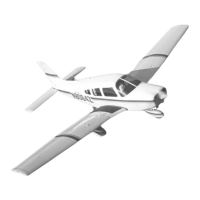
